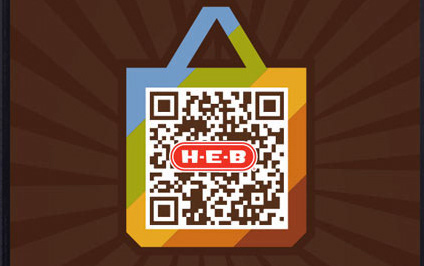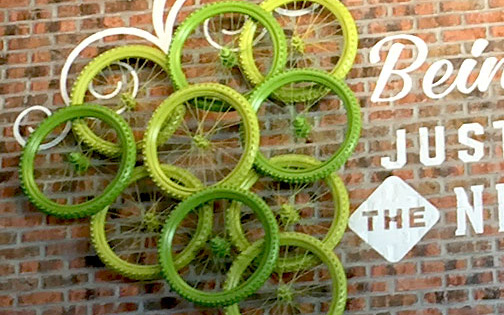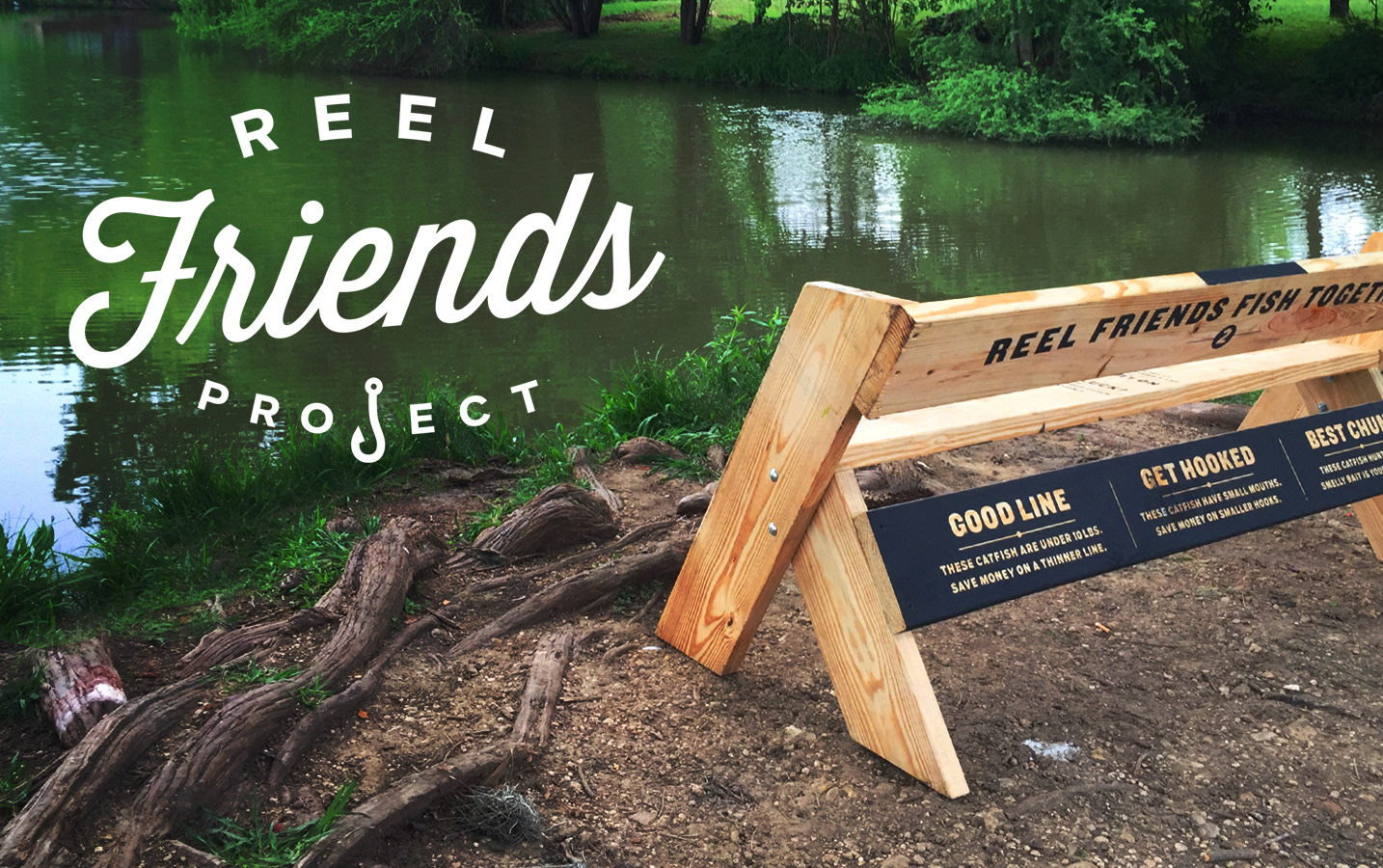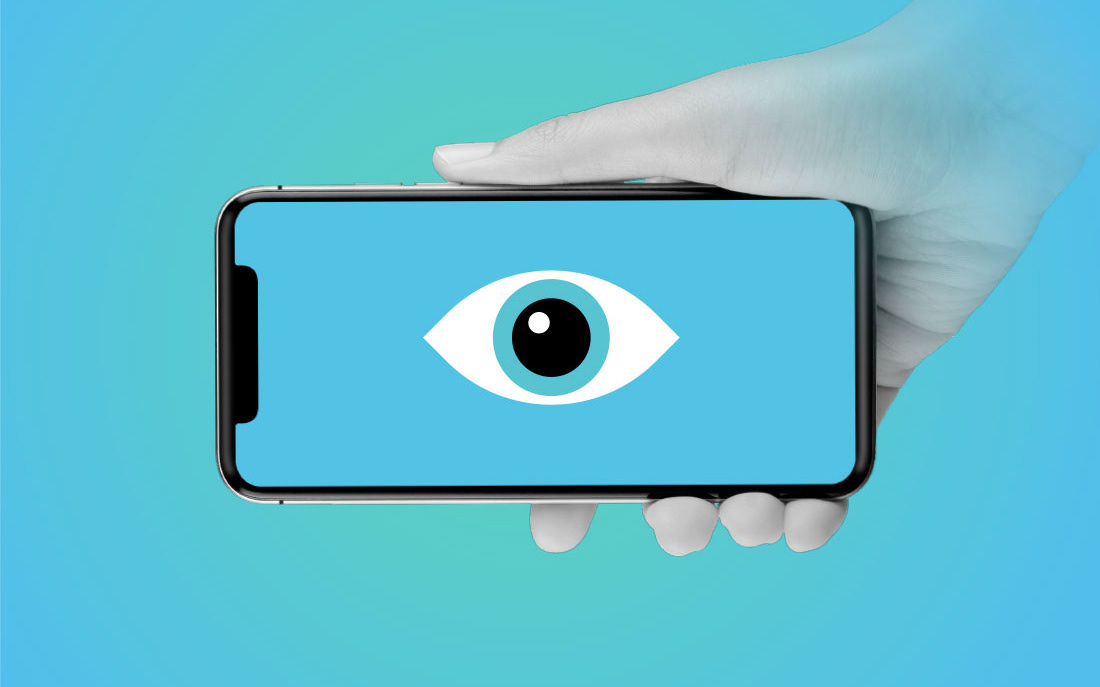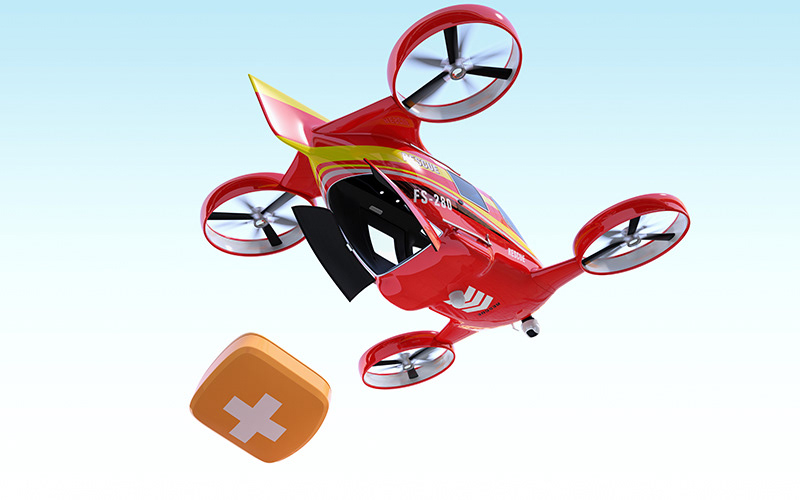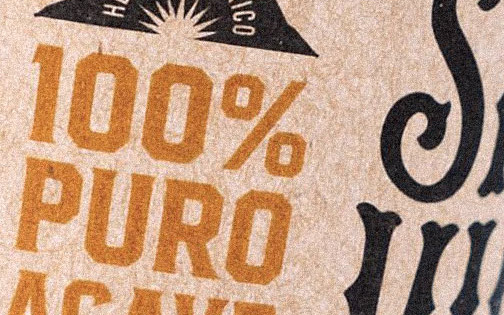How might we improve how retail is customer-tested?
H-E-B® Healthy Living Reinvention
Program Management + Brand Strategy + Design & Direction + Team Leadership + Prototype Testing
When the H-E-B® Healthy Living department was slated for a reinvention, our team needed a way to customer-test a high-fidelity prototype without a build-out budget. So, I proposed trying a virtual reality (VR) prototype test instead.
VR technology presents a low-cost alternative for testing department design in high fidelity without actual fabrication and construction.
1. Frame the scope
Project Objective - Create an in-store oasis that maximizes merchandising and brand messaging to improve customer experience.
Outcome - A new method to test in-store brand experiences that ultimately contributed to a measurable boost in sales.
My Roles
Programming & Project Leader
CX Designer & Brand Strategist
UX & Design Research
2. Understand the needs
Discovery Process:
> Competitive landscape analysis
> Sprints
> Business stakeholder interviews
> Customer insights interviews
> Technology audits
Gather Key Insights:
> Assess experience opportunities.
> Evaluate the in-store experience.
> Survey the Stakeholders.
> Define the scope.
3. Reframe the problem
How might we reinvent the design & testing process for H-E-B® retail spaces?
4. Synthesize meaning
Sprints - We conducted several sprints to gain alignment around business goals.
Customers and Journeys - I converted customer insights to distinctive archetypes and shopping journeys to reveal brand interactiions and design opportunities.
Moodboards - I converged customer and business needs into a stylized visual moodboard to gain stakeholder alignment, create consumbaility, and build a creative compass for the design team.
5. Design and iterate
I worked with the architectural design team and overaw the branding phase during the 3D build of an in-store experience. The high-fidelity model included customized fixtures & finishes, product placement, and a branded sign package with tactical messaging.
Credit: VR modeling coordination and fixture design by Amadeus Fernandez of H-E-B Design and Construction
Leverage Technology - With the use of Google Oculus, a wearable VR technology, the 3D model was transformed into an immersive experience where a seated user can “walk,” engage, and explore the department during a task-oriented test at a human scale. The team prompted the users and gathered insights. Eye tracking, heat-mapping, and timing tools also gathered deeper data.
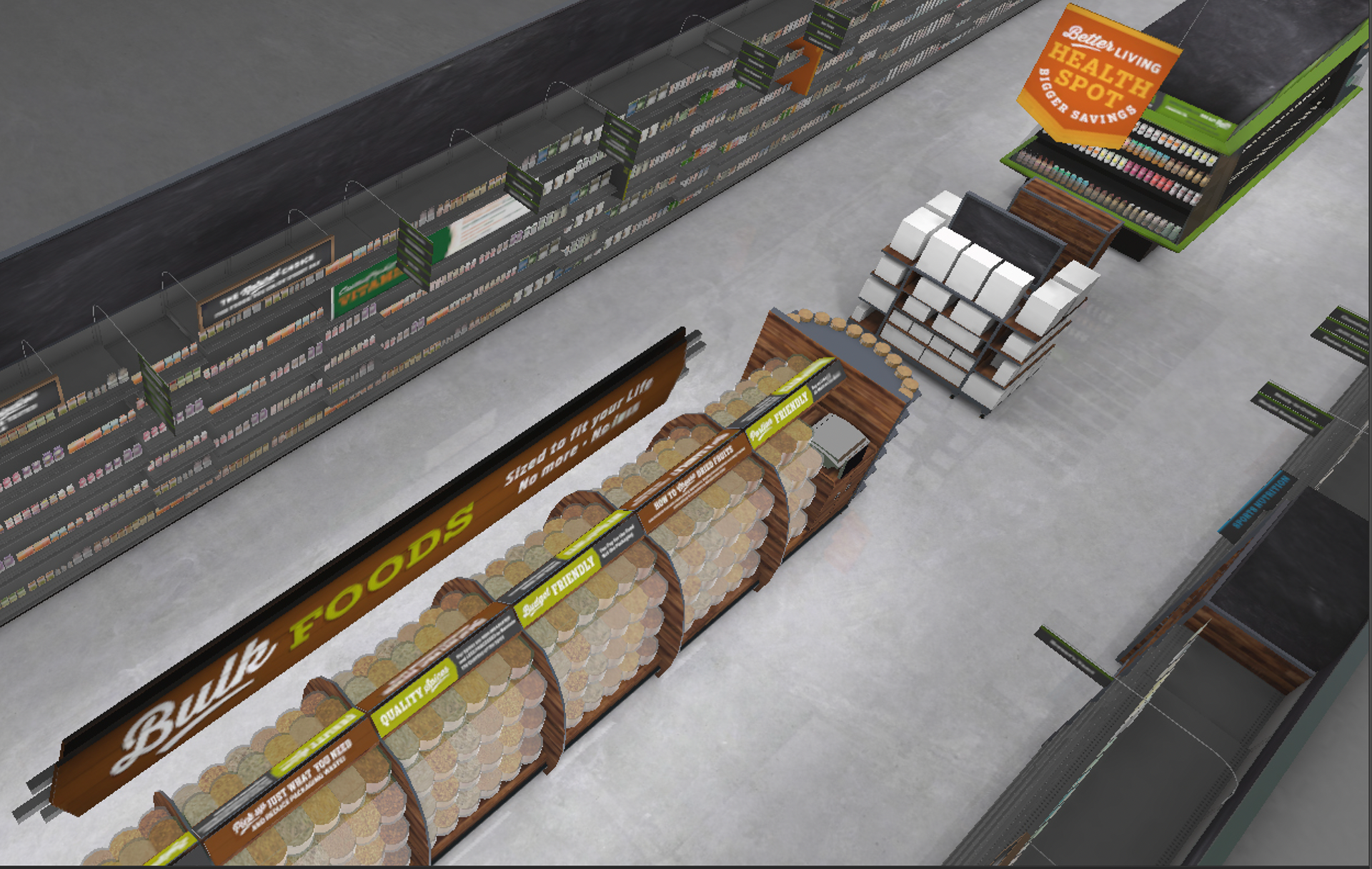
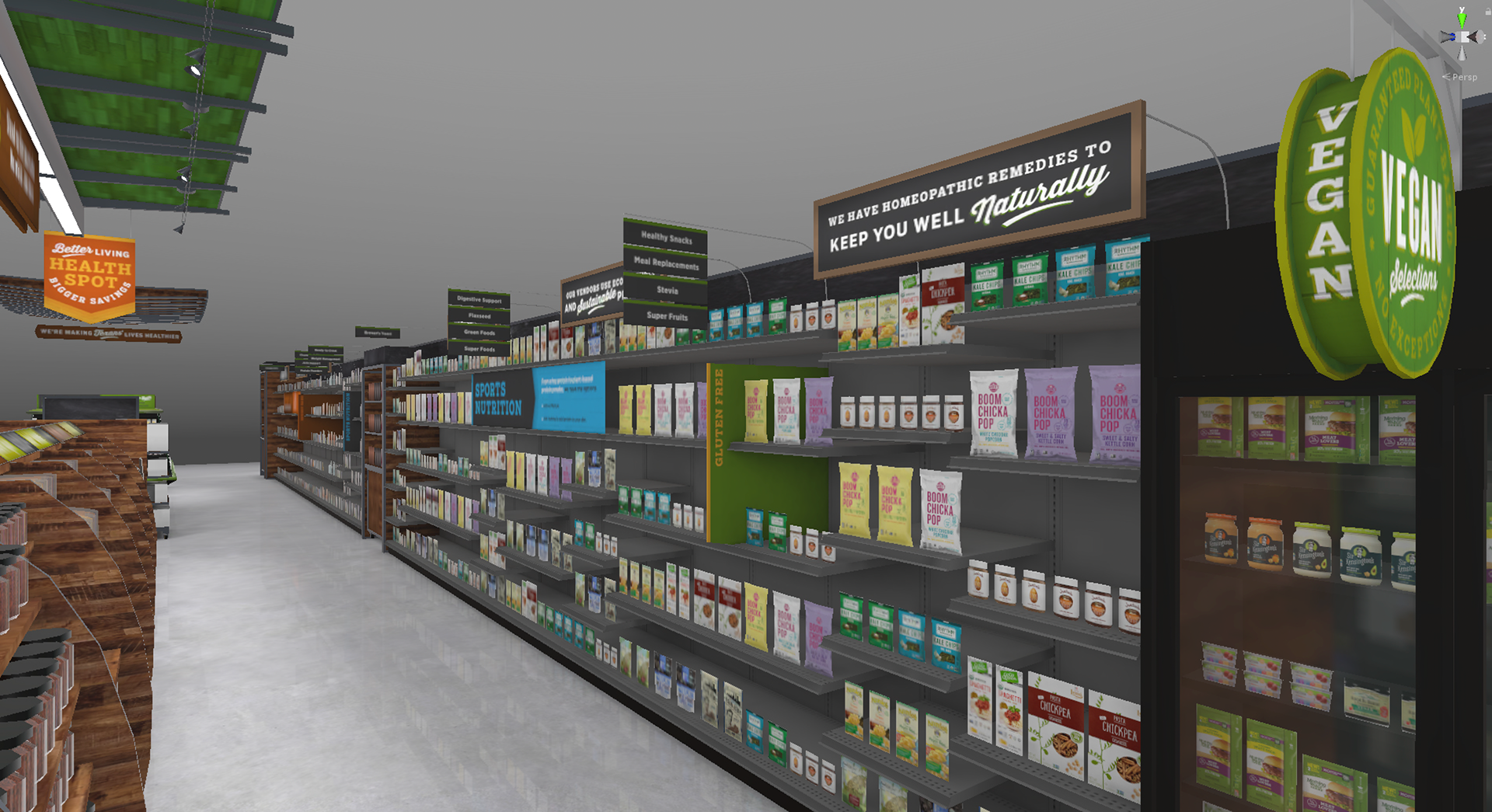

Results
I devised a new and effective method that improved how H-E-B® tests its departments with customers. The new testing model dramatically lowered costs and reduced the need for physical construction. Eye-tacking and heat-mapping tools also created opportunities to gain additional insights through, which improved messaging and merchandizing strategies.
As a result, educational signage, simplified wayfinding, and demo fixtures, were implemented and contributed to a 30% increase in quarterly sales.
